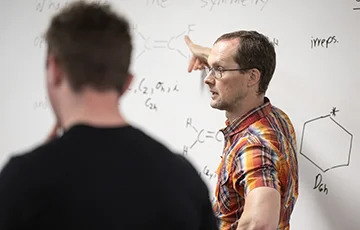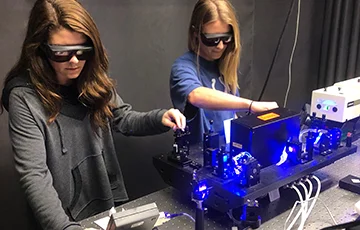Computational Chemistry
Computational chemistry is the examination of chemical processes as modeled through mathematical representations.
- Home
- Departmental Directory
- Liberal Arts
- Department of Chemistry & Biochemistry
- Research
- Computational Chemistry
Exploring the Quantum World
At UM, most work is quantum chemical where quantum mechanics are applied to the interactions of nuclei and electrons. The Mississippi Center for Supercomputing Research provides thousands of computer cores for various applications including predicting the effects of weak interactions, solar cell efficiency, generating IR spectra for detecting molecules in space, explaining fundamental chemical bonding (noble gases can do chemistry!), and showcasing anion chemistry among others.

Research Projects
-

Professor Ryan Fortenberry
The Computational Astrochemistry Group (Fortenberry Lab) at Ole Miss leverages the use of computational techniques for the exploration of the structure and detectable spectra for novel molecular species in the interstellar medium (ISM), planetary atmospheres, and proto-planetary disks. Additionally, we work in utilizing the tenets of journalism, public relations, graphic design, and storytelling for the promotion of science both within the research community and with non-experts alike.
Fortenberry Lab -

Professor Nathan Hammer
When molecules interact noncovalently through hydrogen bonding or other electrostatic interactions, pi-pi interactions, or Van der Waals forces, their physical properties change. The Hammer Research Group studies the physical properties of interacting molecules in environments ranging from the single molecule to the bulk using different laser-based spectroscopic methods and computational modeling. Such studies help answer long-standing questions involving the effects of intermolecular interactions on biologically relevant systems and also in developing devices such as solar cells that incorporate conjugated organic molecules. Both as team members and individually, we work to make new strides in the overall understanding of how molecules interact with each other and how their structure affects their resulting properties.
Hammer Research Group
Computational Chemistry Faculty
Ryan Fortenberry
- Associate Professor of Chemistry and Biochemistry
Nathan Hammer
- Professor of Chemistry and Biochemistry
